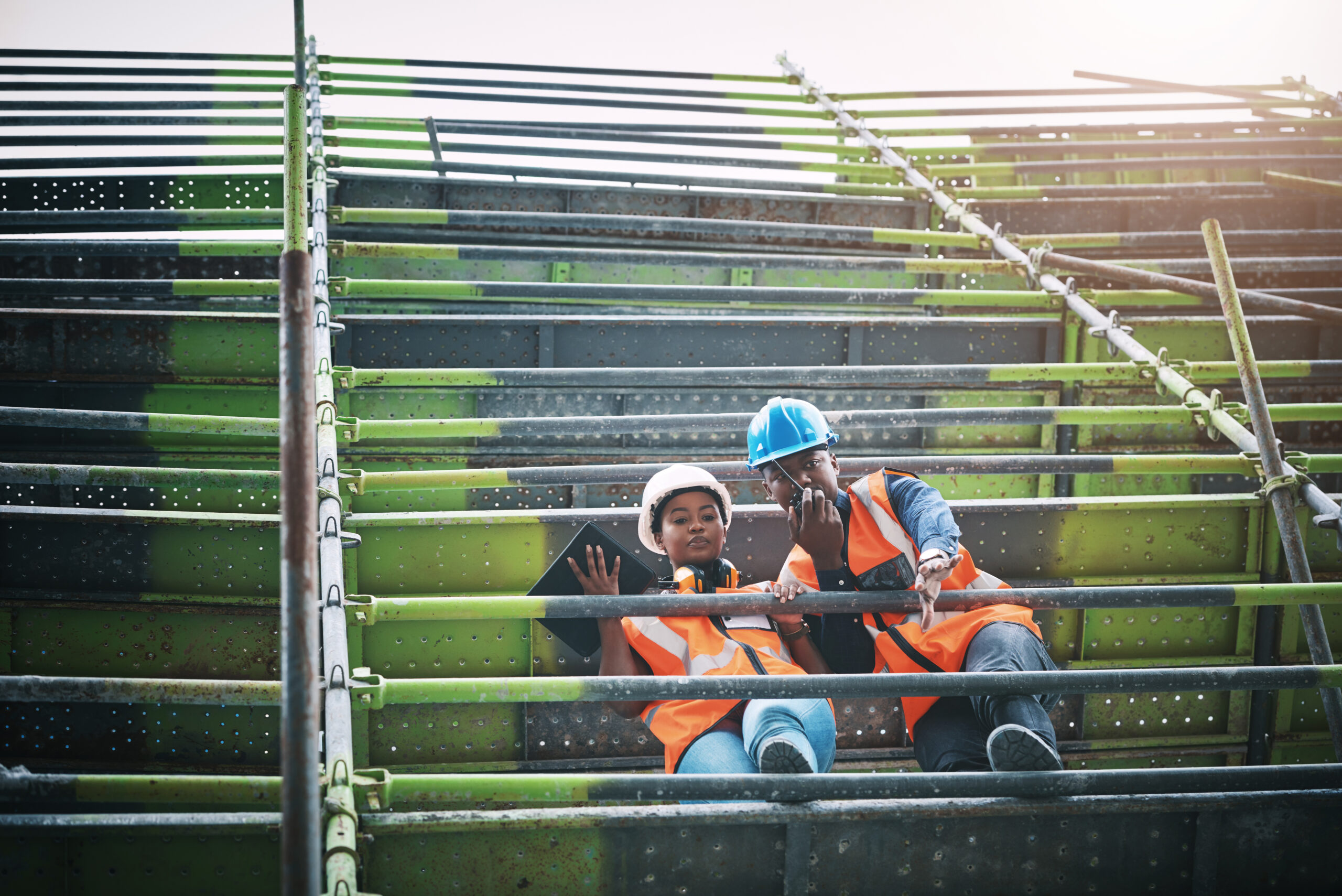Introduction: The Power of Resourcefulness in Construction
The construction industry is one of the most challenging yet rewarding fields, requiring not just technical expertise but also problem-solving skills. Every project comes with its own set of unexpected challenges, from budget constraints to unforeseen weather conditions, material shortages, and last-minute design changes. In such a demanding environment, resourcefulness is one of the most valuable traits a contractor can possess.
Resourcefulness goes beyond basic problem-solving—it involves thinking ahead, adapting to change, and finding innovative solutions that keep projects on track while maintaining efficiency and profitability. In this blog, we’ll explore why resourcefulness is essential in construction and how contractors can leverage creative problem-solving to overcome common obstacles.

Understanding Resourcefulness in Construction
Resourcefulness is the ability to think on your feet and use available resources in the most effective way. In construction, this means being able to:
- Adapt to unexpected challenges – No project goes exactly as planned, but resourceful contractors know how to adjust quickly.
- Find cost-effective alternatives – Working within budget constraints without compromising quality is crucial.
- Maximize efficiency – Making the best use of materials, labor, and time ensures project profitability.
- Stay ahead of problems – Proactively addressing potential roadblocks minimizes delays and costly mistakes.
By fostering a mindset of resourcefulness, contractors can improve productivity, reduce stress, and build a reputation for reliability and innovation.
Common Obstacles in Construction and Resourceful Solutions
1. Budget Constraints: Making the Most of Limited Funds
One of the biggest challenges in construction is staying within budget without sacrificing quality. Costs can escalate due to fluctuating material prices, labor shortages, or unexpected project requirements.
Resourceful Solutions:
- Alternative Materials: Research cost-effective substitutes that maintain quality but reduce costs. Materials such as engineered wood, recycled steel, and prefabricated components can provide cost savings without compromising durability.
- Efficient Procurement: Buy materials in bulk, negotiate with suppliers, or source locally to reduce transportation costs. Building strong relationships with vendors can also help secure discounts and priority delivery.
- Reuse and Recycle: Salvage materials from demolition projects and find ways to repurpose them. For example, reclaimed wood and metal can be used for new builds, reducing waste and saving money.
- Smart Scheduling: Optimize work schedules to minimize downtime and reduce unnecessary labor costs. Effective time management prevents excessive overtime expenses and enhances productivity.
2. Labor Shortages: Getting the Job Done with Limited Workforce
A shortage of skilled labor can slow down projects and increase costs, making it difficult to meet deadlines.
Resourceful Solutions:
- Cross-Training Employees: Train workers in multiple skills so they can fill in where needed. Multi-skilled employees can handle diverse tasks, reducing dependency on specialists.
- Using Technology: Implement automation and digital tools such as scheduling software to increase efficiency. Tools like Building Information Modeling (BIM) and drones can streamline planning and reduce the need for extensive manual labor.
- Outsourcing and Subcontracting: Partner with trusted subcontractors to fill skill gaps without the long-term commitment of hiring full-time staff. This approach allows businesses to scale labor capacity based on demand.
- Incentivizing Retention: Offer bonuses or career development opportunities to keep skilled workers engaged. Employee loyalty programs, ongoing training, and a positive work environment can reduce turnover rates.
3. Material Shortages: Keeping Projects Moving
Global supply chain issues and increased demand can lead to shortages of key building materials, causing significant project delays.
Resourceful Solutions:
- Diversify Suppliers: Work with multiple vendors to ensure a steady supply of materials. Relying on a single supplier increases vulnerability to supply chain disruptions.
- Preorder Materials: Secure materials in advance to prevent delays caused by supply chain disruptions. Early procurement helps avoid price fluctuations and shortages.
- Innovative Alternatives: Explore sustainable and alternative materials that may be more readily available. For example, hempcrete, bamboo, and 3D-printed concrete offer viable construction solutions.
- On-Site Inventory Management: Track usage closely to minimize waste and ensure materials are available when needed. Implementing real-time inventory tracking software can help reduce losses due to mismanagement.

4. Unpredictable Weather Conditions: Staying Productive Despite Delays
Bad weather can halt outdoor construction work, causing delays and increasing costs.
Resourceful Solutions:
- Plan for Weather Variability: Schedule weather-sensitive tasks for favorable seasons. Planning exterior work during dry months reduces risks of weather-related interruptions.
- Use Temporary Shelters: Install tarps, heated tents, or enclosures to continue work despite adverse conditions. Temporary structures can protect workers and materials from extreme conditions.
- Adapt Project Timelines: Build extra time into the schedule to account for weather-related delays. Factoring in buffer periods ensures deadlines are met despite unexpected setbacks.
- Leverage Technology: Use predictive weather apps and remote monitoring tools to anticipate conditions and adjust work schedules accordingly. Data-driven planning enhances project efficiency and minimizes downtime.
5. Project Scope Changes: Managing Last-Minute Adjustments
Clients often request changes mid-project, requiring modifications that can impact timelines and budgets.
Resourceful Solutions:
- Clear Contracts: Define project scope in detail to minimize unexpected changes. Detailed agreements prevent scope creep and unnecessary expenses.
- Change Order Process: Establish a structured process for handling scope changes, including cost and time adjustments. Standardized change management procedures ensure transparency and accountability.
- Flexible Workflows: Adopt modular construction techniques that allow for easier modifications. Prefabricated components enable quick alterations without major disruptions.
- Open Communication: Keep clients informed about how changes impact schedules and costs to set realistic expectations. Regular progress updates enhance trust and collaboration.
6. Safety and Compliance: Keeping Projects on Track
Safety hazards and regulatory compliance issues can slow down work, leading to fines and project shutdowns.
Resourceful Solutions:
- Regular Training: Conduct frequent safety workshops to ensure workers understand protocols. Training sessions reinforce safe work practices and reduce accident risks.
- Invest in Safety Technology: Utilize AI-driven monitoring systems, wearables, and automation to enhance workplace safety. Smart devices can detect hazards in real time and prevent injuries.
- Preventive Maintenance: Keep equipment and tools in optimal condition to reduce accidents. Routine inspections prevent machinery failures and extend equipment lifespan.
- Documentation and Audits: Maintain up-to-date records to ensure compliance with safety regulations and avoid fines. Proper record-keeping simplifies regulatory inspections and demonstrates adherence to industry standards.
Conclusion: The Key to Long-Term Success in Construction
Resourcefulness in construction is more than just a helpful trait—it’s a necessity for overcoming challenges and ensuring the success of every project. Contractors who develop creative problem-solving skills and adopt innovative strategies can:
- Keep projects on schedule and within budget.
- Improve efficiency and productivity.
- Reduce stress and increase job satisfaction.
- Build a reputation as a reliable and innovative contractor.
By fostering a culture of adaptability, investing in new technologies, and staying ahead of challenges, contractors can not only survive but thrive in an ever-changing industry. Resourcefulness isn’t just about reacting to problems—it’s about proactively finding opportunities for improvement and growth.







